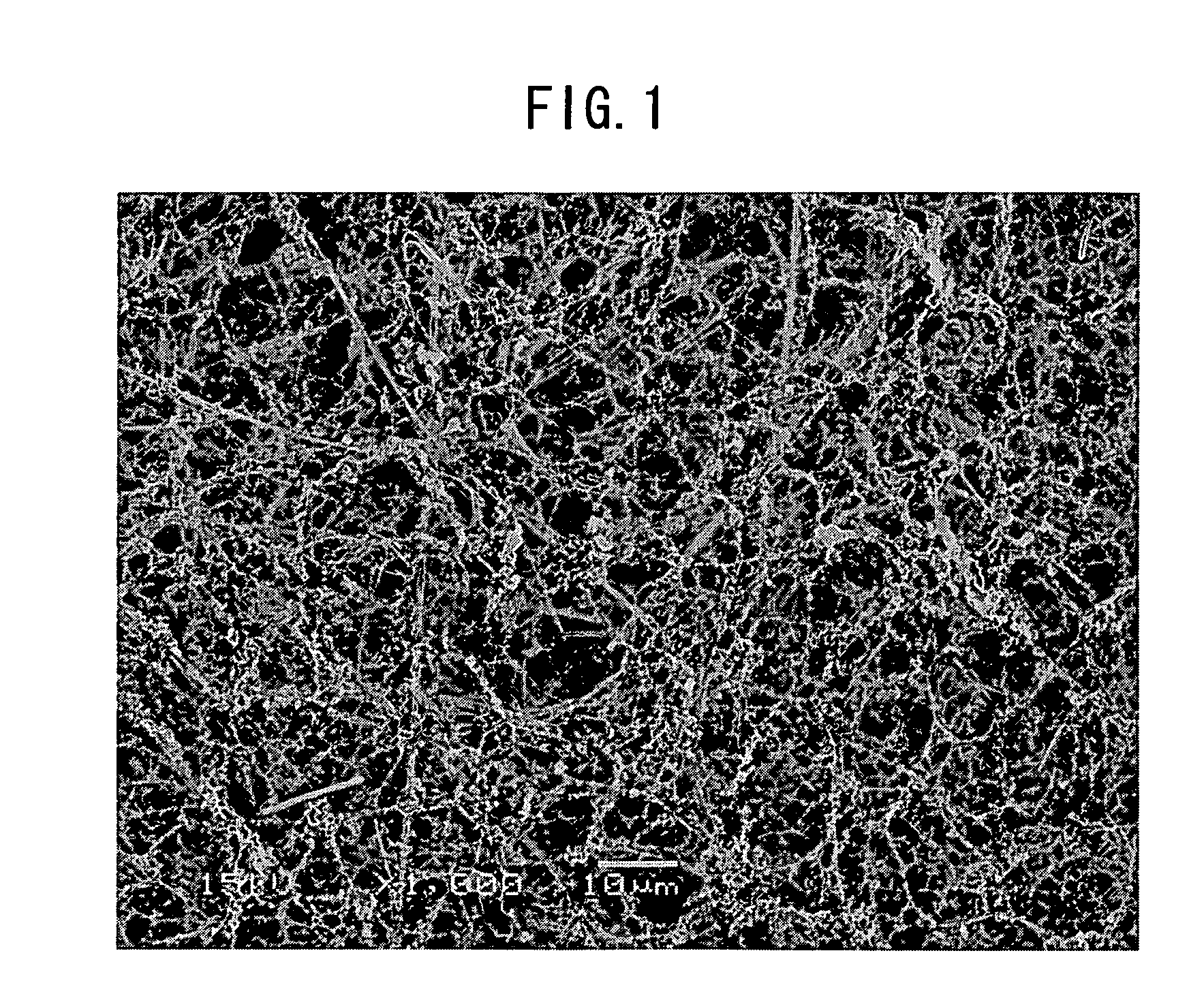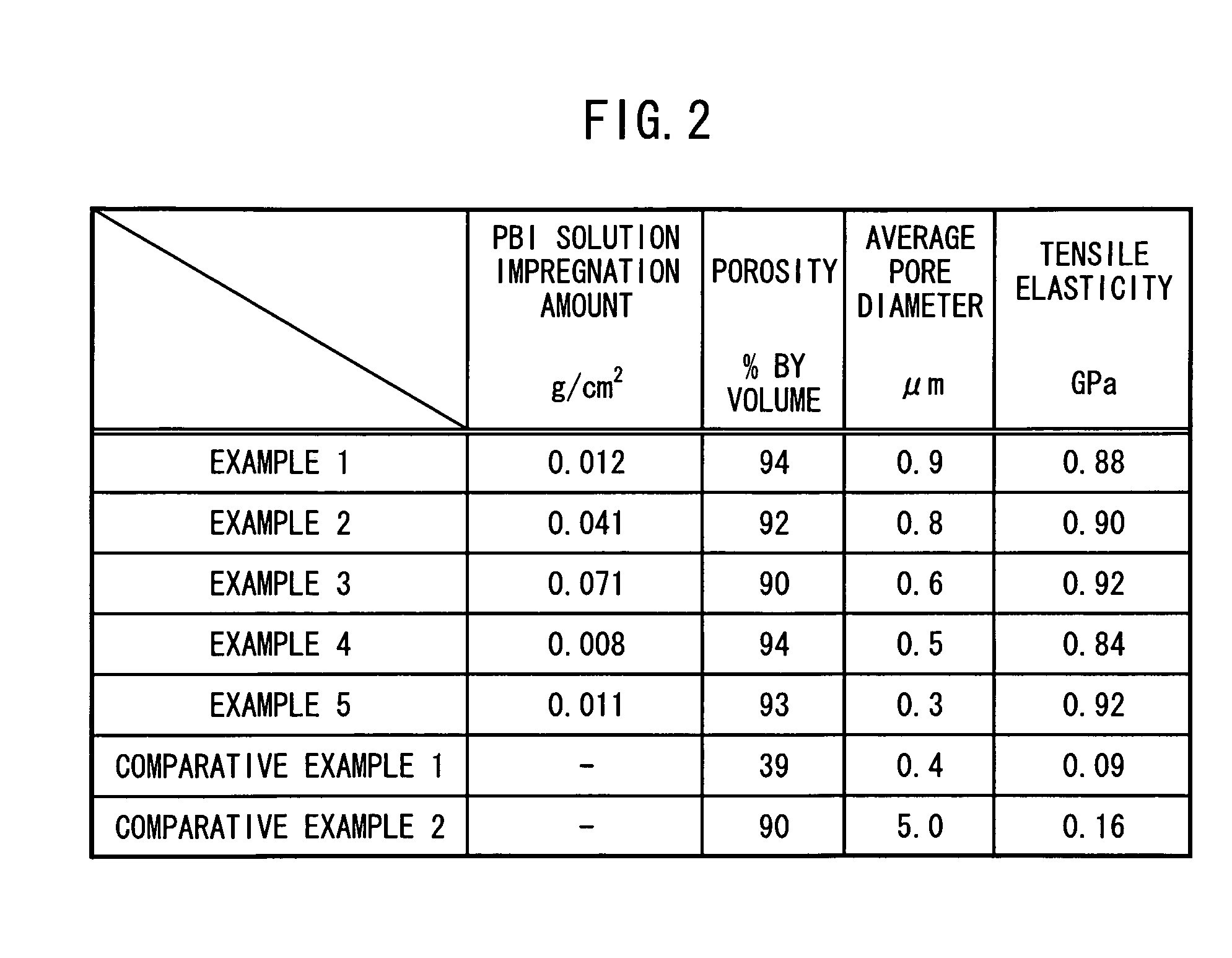Composite porous membrane and method for producing the same
a porous membrane and composite membrane technology, applied in the field of composite porous membrane and a production method, can solve the problems of poor rigidity of composite membrane, poor rigidity of polytetrafluoroethylene sheet, and inability to be easily handled, and achieve high rigidity and sufficient porosity
- Summary
- Abstract
- Description
- Claims
- Application Information
AI Technical Summary
Benefits of technology
Problems solved by technology
Method used
Image
Examples
example 1
[0057]2 g of 3,3′,4,4′-tetraminobiphenyl tetrahydrochloride having the following structural formula was dissolved in 40 g of 116% polyphosphoric acid under an Ar atmosphere at 120° C.
3,3′,4,4′-Tetraminobiphenyl tetrahydrochloride
[0058]After all the compound was dissolved and the HCl generation was stopped, 1.304 g of 4,4′-dicarboxydiphenyl ether having the following structural formula was added to and dissolved in the resultant solution. The solution was heated to 160° C. and stirred for 12 hours to accelerate polymerization.
4,4′-Dicarboxydiphenyl ether
[0059]The reaction mixture was poured into a deionized water under rapid stirring, and the generated precipitation was water-washed. Phosphoric acid attached to the precipitation was neutralized with an aqueous sodium hydrogen carbonate solution, and the resultant was water-washed again and vacuum-dried. Thus, a PBI having a molecular weight of 335000, represented by the following structural formula, was obtained at a yield of 98%.
[00...
PUM
| Property | Measurement | Unit |
|---|---|---|
| pore diameter | aaaaa | aaaaa |
| pore diameter | aaaaa | aaaaa |
| pore diameter | aaaaa | aaaaa |
Abstract
Description
Claims
Application Information
 Login to View More
Login to View More - R&D
- Intellectual Property
- Life Sciences
- Materials
- Tech Scout
- Unparalleled Data Quality
- Higher Quality Content
- 60% Fewer Hallucinations
Browse by: Latest US Patents, China's latest patents, Technical Efficacy Thesaurus, Application Domain, Technology Topic, Popular Technical Reports.
© 2025 PatSnap. All rights reserved.Legal|Privacy policy|Modern Slavery Act Transparency Statement|Sitemap|About US| Contact US: help@patsnap.com



